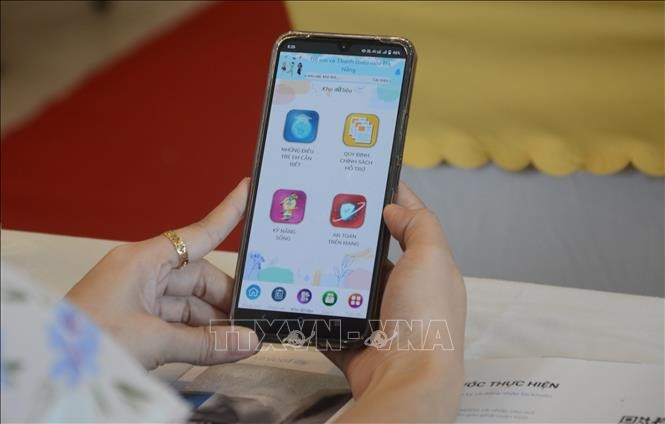Currently, four submarine cable lines exploited by Vietnamese network operators, including AAG, APG, AAE-1, and IA (also known as Lien A), are experiencing problems, affecting Internet traffic from Vietnam to international destinations.
Meanwhile, services and websites hosted in Vietnam will not be affected by this incident. The majority of international Internet capacity is for mobile Internet customers and individuals and households. Therefore, the feeling of slow speed will be clearly seen in mobile broadband subscribers and households.

Mobile access to websites with servers located abroad will clearly feel the internet speed is significantly slower. Photo: VNA
Vu The Binh, General Secretary of the Vietnam Internet Association, said that in the next 5 years, Vietnam will probably need at least 2-3 more submarine fiber optic cables to meet growth needs. If the expectation is to turn Vietnam into a regional transit station, it will need even more.
“The scenario of almost all submarine cable channels having problems is a very rare event, we think that network operators have considered it but are not prepared for this situation. Land cable lines are very likely to not be able to be upgraded quickly due to equipment limitations. With the situation of submarine cable lines having problems more and more frequently, the need to add new cable lines becomes more urgent,” said Mr. Vu The Binh.
According to the Telecommunications Department, Vietnam currently has 5 submarine cable lines, while Thailand has 13 and Malaysia has more than 30 submarine cable lines. Meanwhile, Singapore is the regional connection center (hub). The breakdown of Vietnam's submarine cable lines has affected 30-40% of international traffic for businesses and forced them to expand to other land routes.
To build digital infrastructure, the next phase must have a submarine optical cable owned by Vietnam so that it can not only proactively address Vietnam's needs but also aim to become a regional one, providing bandwidth to the world.
According to Tin Tuc Newspaper